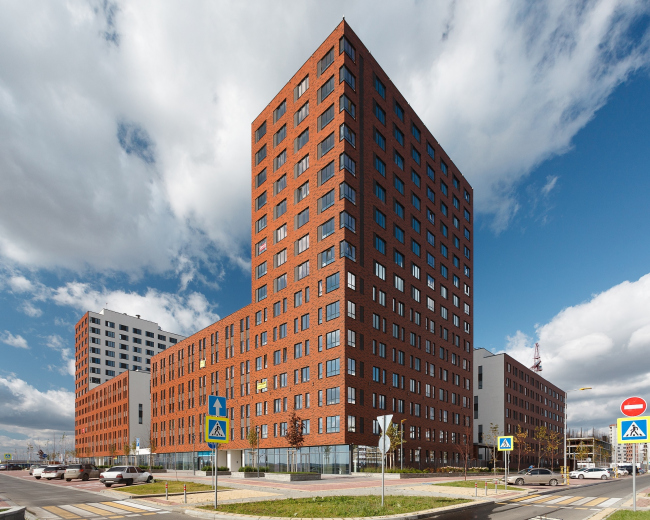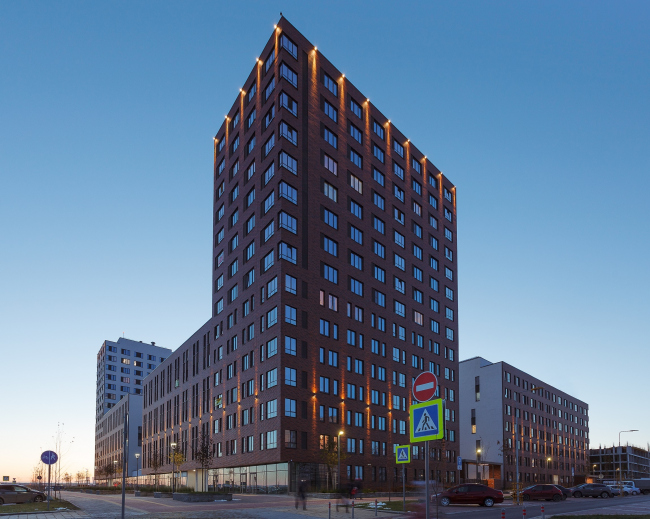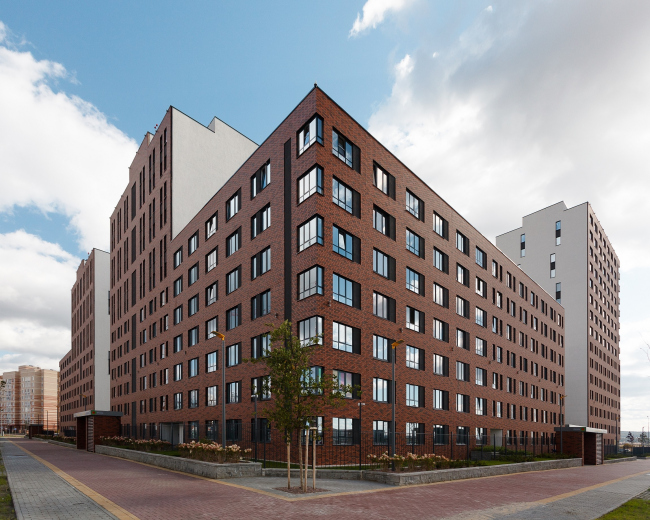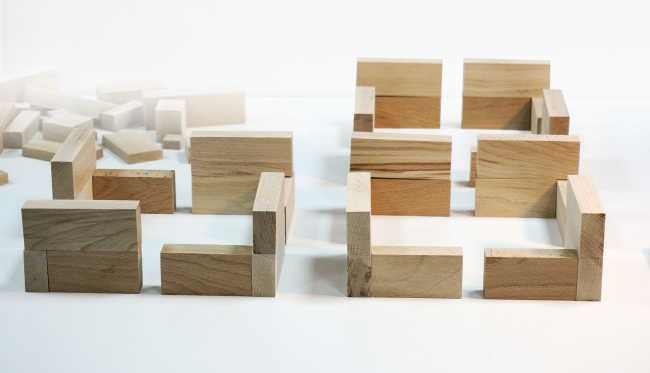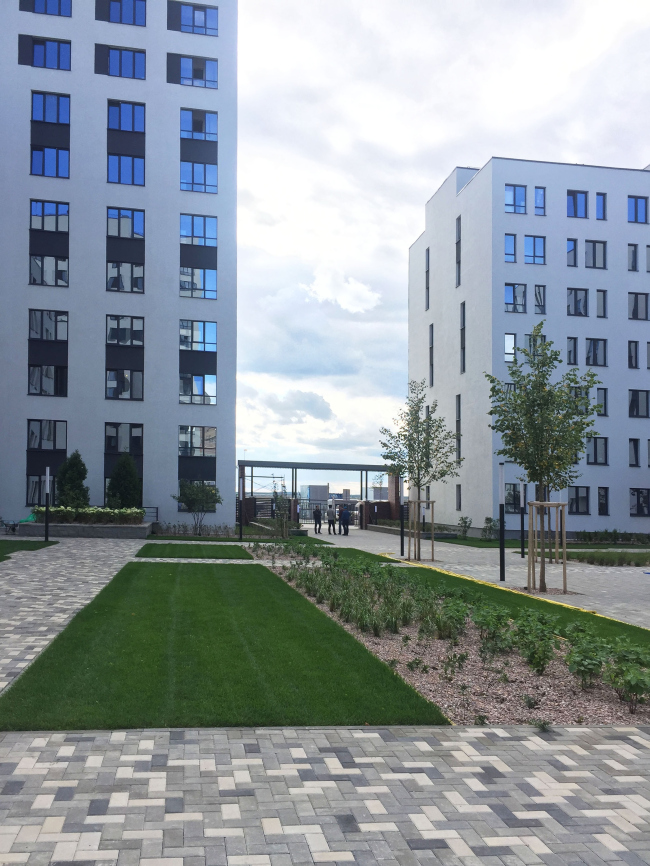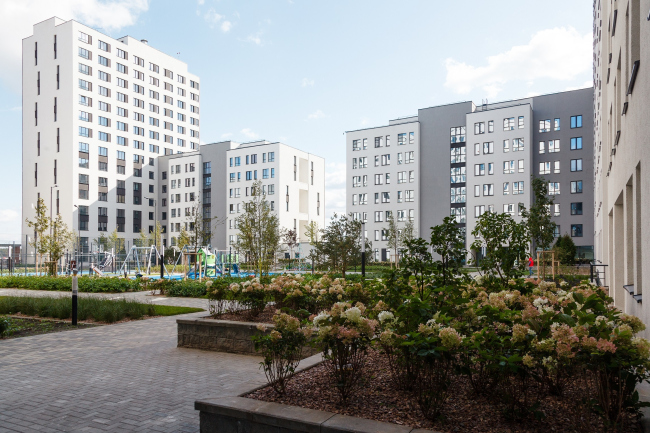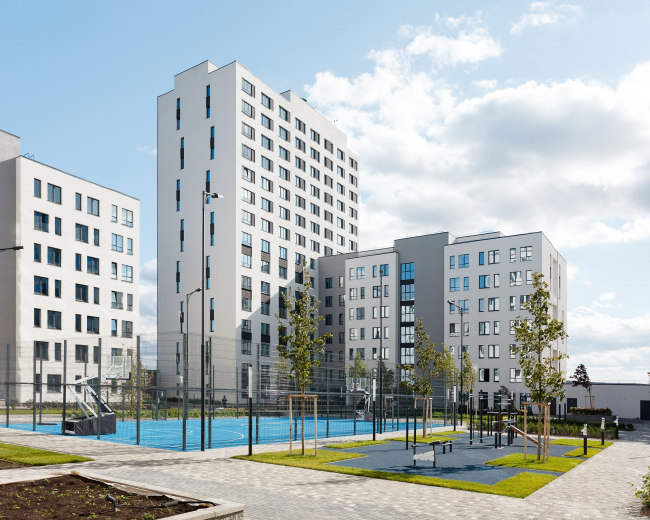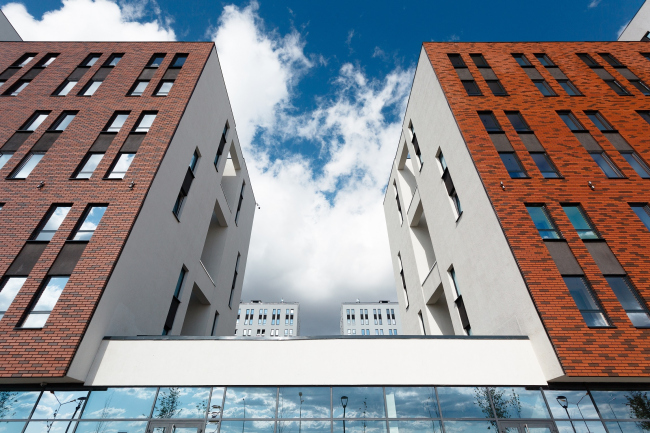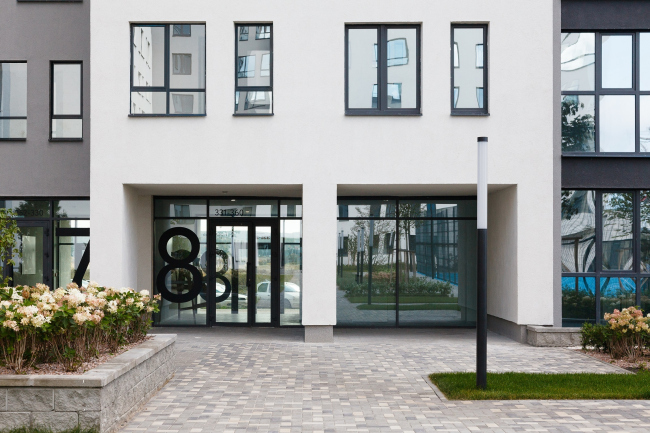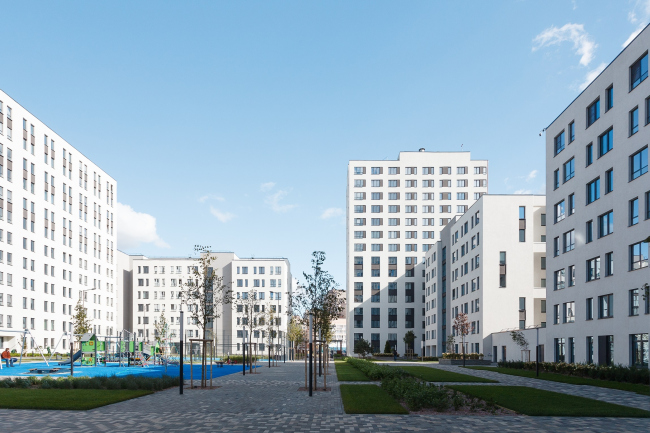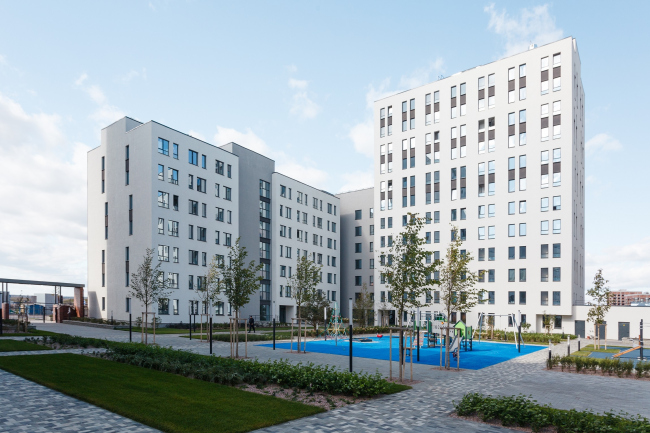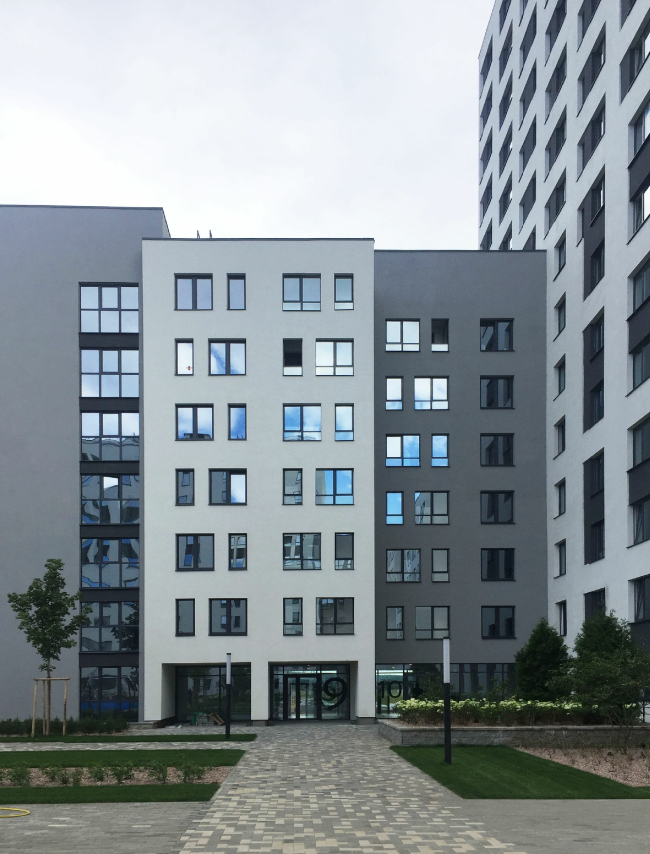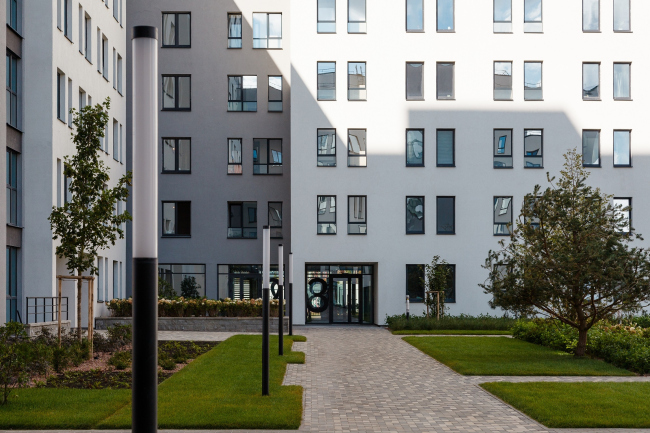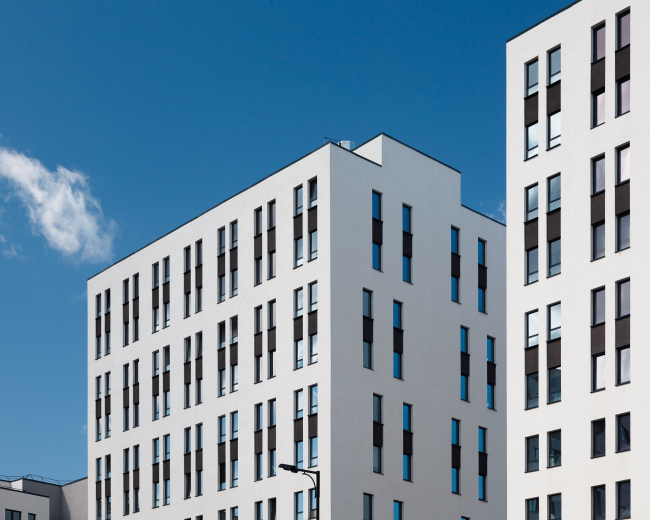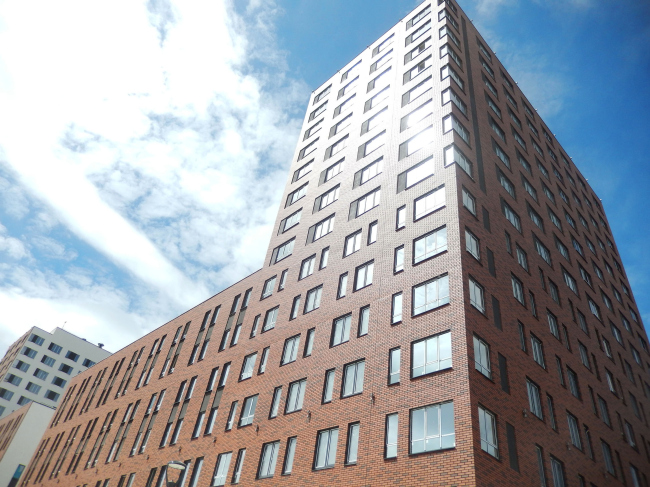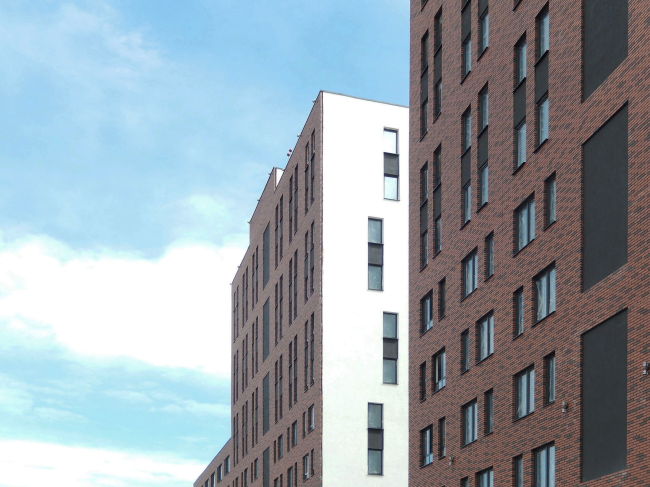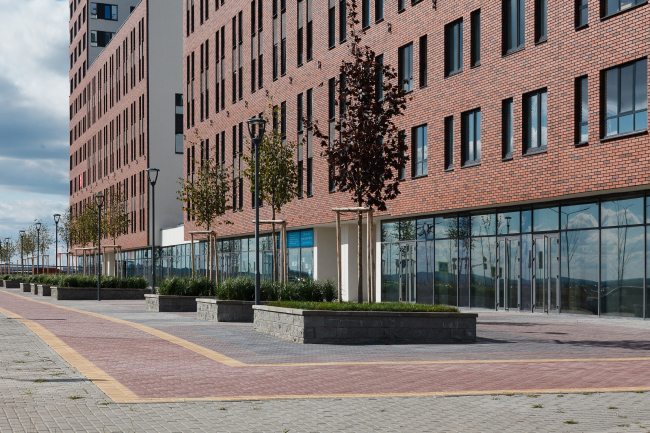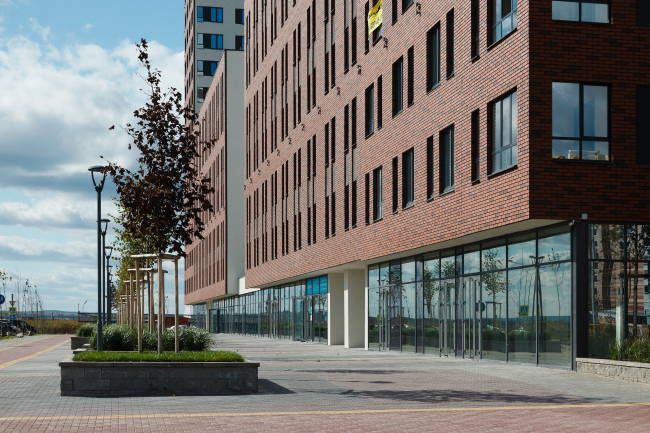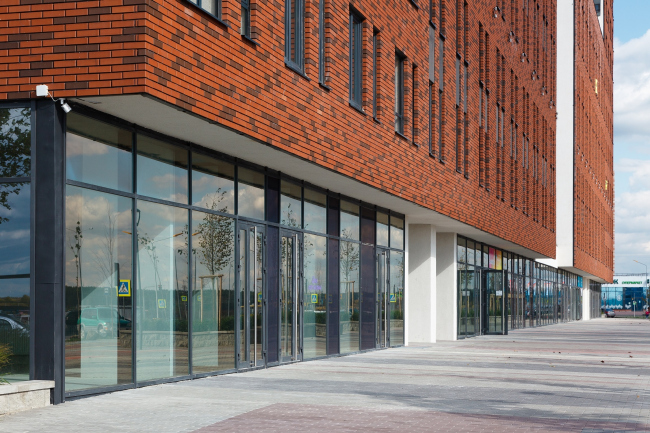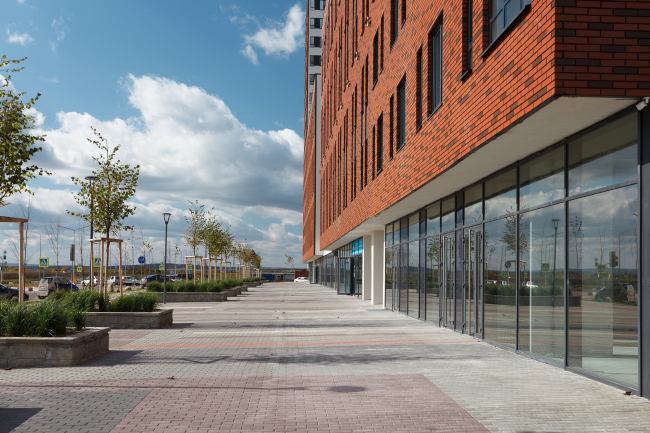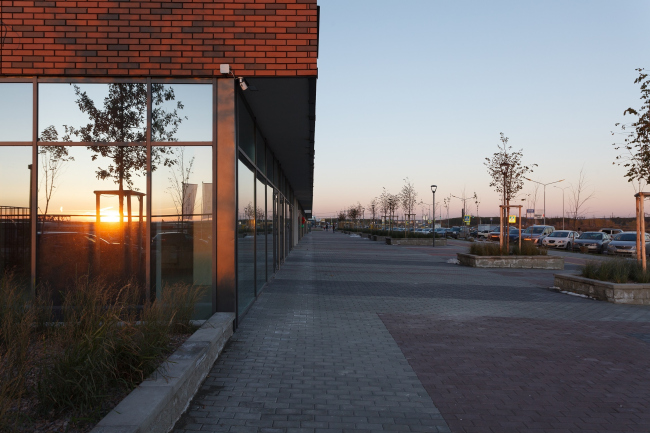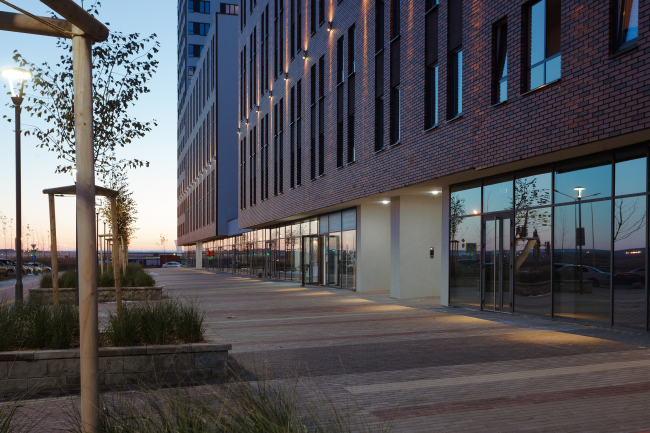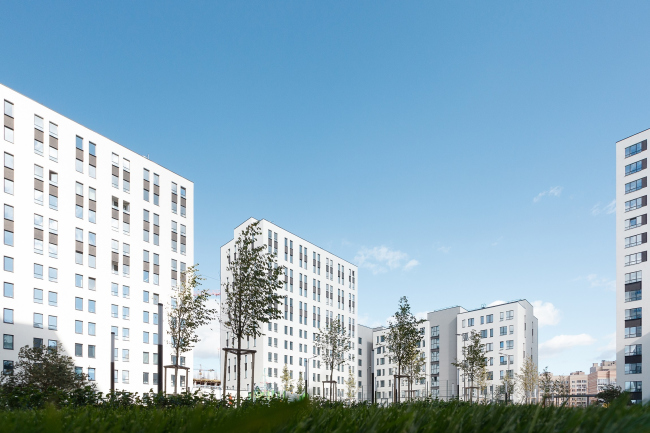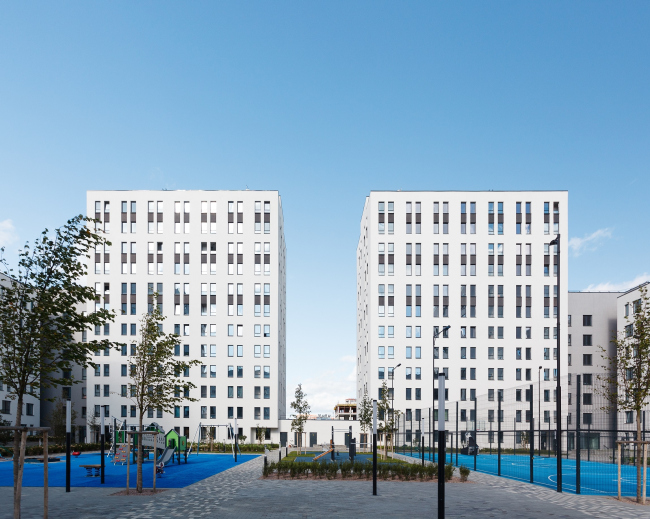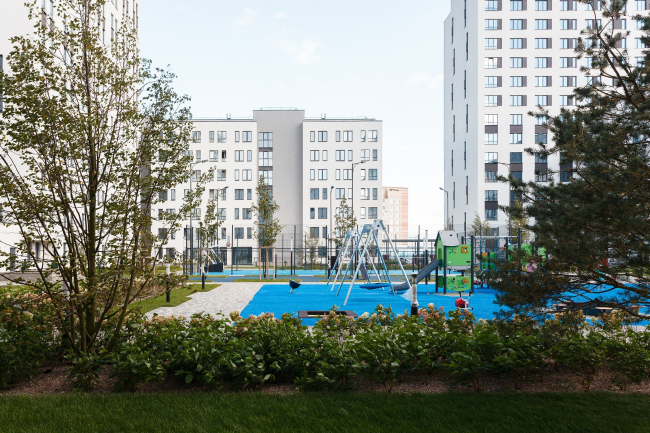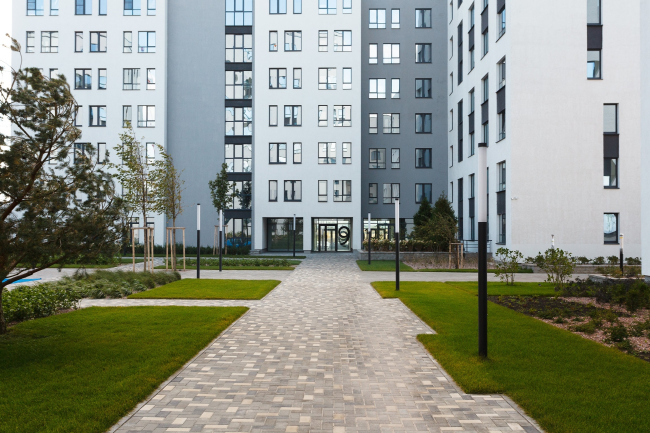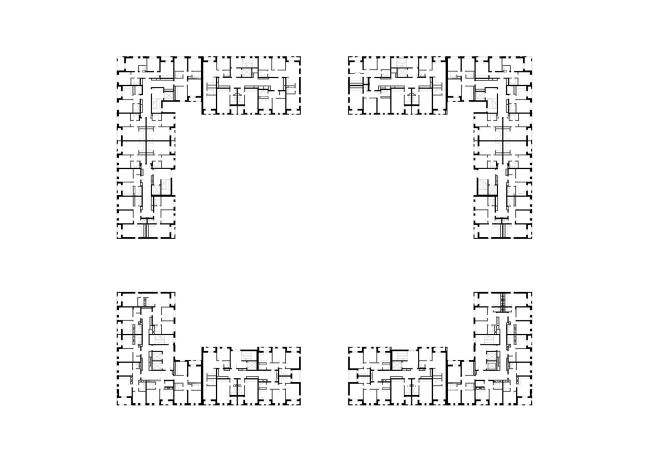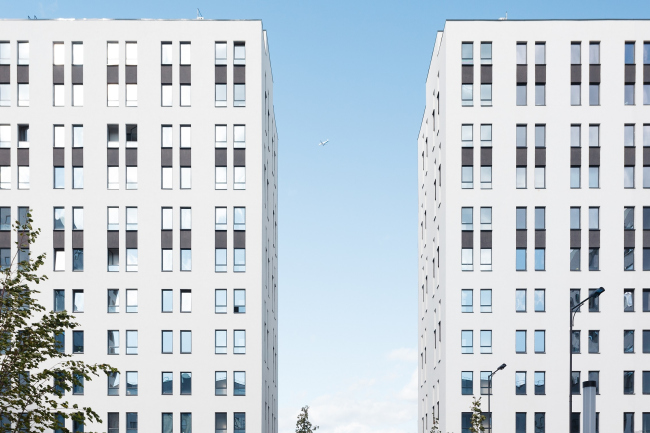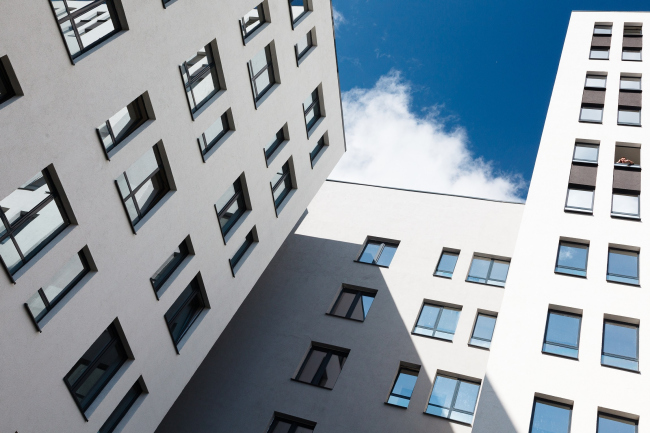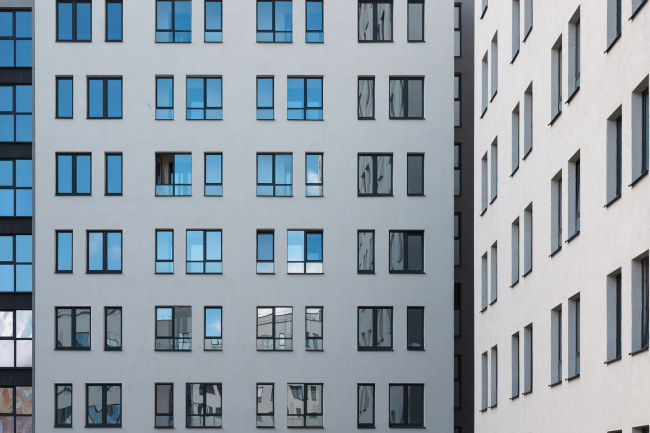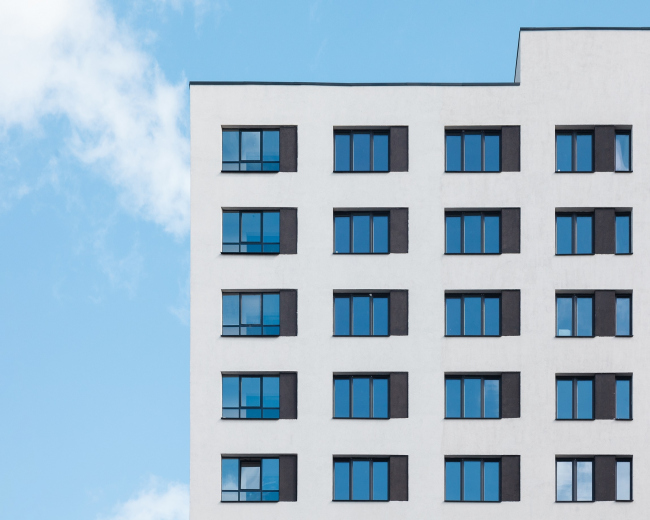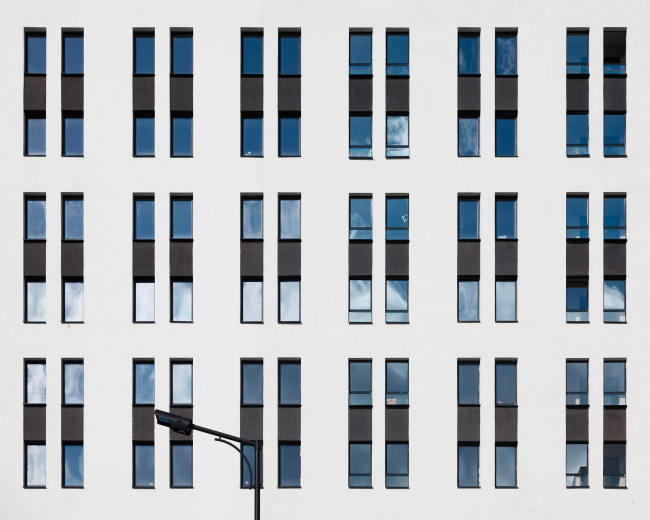|
Published on Archi.ru (https://archi.ru) |
|
| 20.12.2017 | |
|
Non-revolutionary Changes |
|
|
Marya Snejinskaya |
|
| Architect: | |
| Rostislav Zaiser | |
| Studio: | |
| OSAArchitects | |
|
Designing mass housing residential blocks for the “Brusnika” developers, OSAArchitects created an environment that clearly exceeds the originally proposed housing class, at least by Ekaterinburg standards. The residential block in "Solnechny" neighborhood © OSAArchitectsA large-scale project of the master developer “Forum Group” includes the construction of a full-fledged city neighborhood for about 85 000 residents at the outskirts of Ekaterinburg, close to the city ring road (now in construction) by 2029. 2.5 M square meters of property will be built, out of which 300 000 square meters will be occupied by the infrastructure: schools, kindergarten, a sports center, retail stores, and a shopping mall. The project also includes a large park. The project is already being implemented with the participation of four more developers, each of which is developing its segment within the framework of very detailed specifications compiled by the master developer. Essentially, the project is based on an idea that is just as habitual for everyone on the post-soviet space as it is dismissed by the modern urban construction, i.e. the idea of the so-called “remote sleeping belt neighborhoods”, in which housing stock prevails, diluted by the necessary social and service infrastructure. It turned out, however, that even this typology yields many opportunities for creating and developing a comfortable living environment. For the development company “Brusnika”, which participates in this large-scale project, OSAArchitects designed four residential blocks 25 000 square meters each. According to the “Brusnika” standards, the apartments are offered in two typologies: classic – single, double, and three-room apartments and apartments of a “European” design, with one, two or three bedrooms. The area of the apartments ranges from 30 to 85 square meters. The residential block in "Solnechny" neighborhood © OSAArchitectsThe residential block in "Solnechny" neighborhood © OSAArchitectsThe residential block in "Solnechny" neighborhood © OSAArchitectsThe first city block, which was implemented within this project, borders immediately on the 2nd Novosibirskaya Ulitsa, which connects “Solnechny” (“Sunny”, this is actually the name of the new neighborhood – translator’s note) with the rest of the city. Actually, the whole territory of the future neighborhood is divided into squares about 100 by 100 meters. Originally, it was planned to build on the perimeter of each of the quadrants multi-sectional houses of almost equal height because this solution looked like the only one possible to ensure the safety of the yard space. In the process of working on the details of the general concept, the architects were able to convince the developer in the opposite and proposed an alternative approach to creating a comfortable environment. This approach consists in fracturing the monotonous multi-sectional wall into individual volumes with a prominent silhouette. As a result, the architects got a closed, yet still transparent, yard, being inside of which, one is not only able to see the opposite façade but also the sky and the street, viewable down to the ground. Without losing in the technical and economic performance, the silhouettes of the buildings began to look bolder and took on some individuality. The residential block in "Solnechny" neighborhood © OSAArchitectsThe residential block in "Solnechny" neighborhood © OSAArchitectsThe residential block in "Solnechny" neighborhood © OSAArchitectsThe residential block in "Solnechny" neighborhood © OSAArchitectsThe residential block in "Solnechny" neighborhood © OSAArchitectsThe residential block in "Solnechny" neighborhood © OSAArchitectsThe residential block in "Solnechny" neighborhood © OSAArchitectsThe residential block in "Solnechny" neighborhood © OSAArchitects“The steep height differences give us an opportunity for simultaneously meeting the needs of very different consumer groups – explains the leader of the author team Rostislav Tsaizer – some people prefer to climb to the 15th floor, and some like to feel as if they live in a human-proportionate 8-story house, and we are quite capable of combining these two things within a single block”. The houses are linked in twos by quite low blocks, their opposite sides having two small doors in them leading to the yard for the pedestrians and authorized vehicles. This way, the principle of a safe and vehicle-free yard is still observed but the feeling of a “dungeon” of a yard is gone. The residential block in "Solnechny" neighborhood © OSAArchitectsThe residential block in "Solnechny" neighborhood © OSAArchitectsThe residential block in "Solnechny" neighborhood © OSAArchitectsThe residential block in "Solnechny" neighborhood © OSAArchitectsThe residential block in "Solnechny" neighborhood © OSAArchitectsThe residential block in "Solnechny" neighborhood © OSAArchitectsThe residential block in "Solnechny" neighborhood © OSAArchitectsAccording to the original plan of the master developer, all of the façades were to be made of bricks but the architects proposed to base their design solution on contrast. Although the outside walls, which face the city, were still made of brick, in the yards they are much lighter – stucco-white with an odd inclusion of gray, livened up by the rhythmic variety of the windows. The inside “yard” façades are very cozy and ostentatiously “inside”, like the lining of a coat. On the other hand, they are subject to the principle of “background architecture” – the accent is shifted to the bright landscaping and lots of greenery in the yard, while the buildings are but a background for that. On the outside, on the other hand, the Flemish brick decoration is meant to inspire a feeling of security and “fortress” protection, enhanced by the high-rise accents on the corners. This way, the contrast between the outside and inside design is particularly vivid. The residential block in "Solnechny" neighborhood © OSAArchitectsThe residential block in "Solnechny" neighborhood © OSAArchitectsThe residential block in "Solnechny" neighborhood © OSAArchitectsThe residential block in "Solnechny" neighborhood © OSAArchitectsThe residential block in "Solnechny" neighborhood © OSAArchitectsHowever, the massiveness of the building as perceived from the side of the main street is lightened by a glazing band of the retail band sunken in in relation to the façade surface. The original solution proposed by the master developer consisted in quite the opposite – it provided for an outstanding stylobate. The design of the first floor proposed by the architects, on the other hand, yielded some extra space for a landscaped sidewalk running alongside the façade and hosting the cafés’ terraces. The residential block in "Solnechny" neighborhood © OSAArchitectsThe residential block in "Solnechny" neighborhood © OSAArchitectsThe residential block in "Solnechny" neighborhood © OSAArchitectsThe residential block in "Solnechny" neighborhood © OSAArchitectsThe residential block in "Solnechny" neighborhood © OSAArchitectsThe residential block in "Solnechny" neighborhood © OSAArchitectsThe residential block in "Solnechny" neighborhood © OSAArchitectsThe residential block in "Solnechny" neighborhood © OSAArchitectsThe housing class of the project is standard, and it required, first of all, a selection of economically grounded solutions. A lot of original proposals, specifically, the “warm” wooden panels decorating the bottom floors and the play of the Flemish brick fell victim to this selection. But then again, getting rid of such decoration elements, the authors were still able to keep the basic architectural and engineering solutions: the dynamic silhouette of the residential block, end-to-end glazing of the lobbies, the “dependable” façade of Flemish bricks, and the high-quality organization of the yard and adjacent streets. The residential block in "Solnechny" neighborhood © OSAArchitectsThe residential block in "Solnechny" neighborhood © OSAArchitectsThe residential block in "Solnechny" neighborhood © OSAArchitectsThe residential block in "Solnechny" neighborhood © OSAArchitectsThe residential block in "Solnechny" neighborhood © OSAArchitectsHowever, OSAArchitects believe that their main achievement in working on the blocks of “Solnechny” is the fact that in the course of work they were able to change the developer’s attitude to designing residential areas of such class. “We were able to get across to our partners and to the master developer that the city block may not necessarily have a continuous façade – Rostislav Tsaizer says – Today it’s even hard to imagine just how bleak and oppressive this brick wall could have looked. Thanks to the technique and solutions that we employed, we got a human-proportionate living space with a unique character of its own”. The residential block in "Solnechny" neighborhood © OSAArchitectsThe residential block in "Solnechny" neighborhood © OSAArchitectsThe residential block in "Solnechny" neighborhood © OSAArchitectsThe residential block in "Solnechny" neighborhood © OSAArchitectsThe residential block in "Solnechny" neighborhood © OSAArchitects |
|
